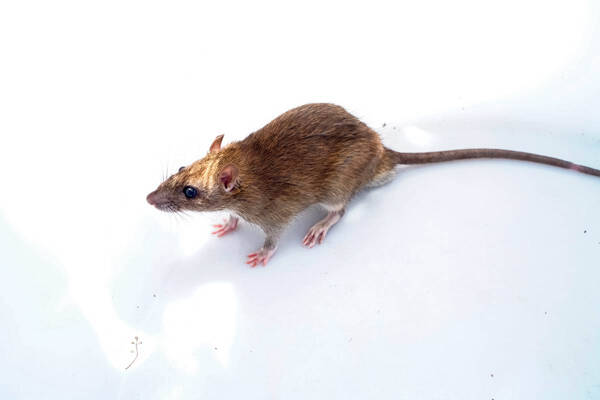Rattus nitidus
IUCN
LCBasic Information
Scientific classification
- name:Rattus nitidus
- Scientific Name:Rattus nitidus,Gray-breasted rat, water rat
- Outline:Rodents
- Family:Rodentia Muridae Rattus
Vital signs
- length:140-180mm
- Weight:
- lifetime:
Feature
The Macropodus is a medium-sized rodent with a stout body, large, thin ears, a slender tail, long hind legs, brown fur on the back and grayish-white fur on the belly.
Distribution and Habitat
It is mainly distributed in the southeast of the Asian continent. In China, it is distributed in Yunnan, Sichuan, Guizhou, Hunan, Guangxi, Guangdong, Fujian, Jiangxi, Zhejiang, Shanghai, Jiangsu, Anhui, Shaanxi, Gansu, and Hainan. Abroad, it is distributed in Vietnam, Laos, Thailand, Myanmar, Nepal, Bhutan, and northern India. The above areas are native species. It has also been introduced to some Pacific islands, including Sulawesi and Sumatra in Indonesia, Luzon in the Philippines, Palau, and Singapore.
Big-footed rats live in mountainous and hilly areas at an altitude of 800-3200 meters, in foothill crop fields and foothill bushes, vegetable gardens, rice fields, and occasionally enter homes.
Appearance
The individual is relatively large. The tail length is almost equal to the body length, and the upper and lower parts of the tail are the same color, all black-brown. The ring pattern formed by the scales on the tail is not very obvious, and short and thick hair grows inside the ring pattern. The hair at the tip of the tail is not long. The hair color on the back of the whole body is the same, brown-black. There are many guard hairs, but they are not long and not significantly thick. The hair color on the side is lighter, with a yellow-white hue, and the hair tips are light brown-yellow. The hair color on the back and ventral sides gradually transitions, with no obvious boundaries. The hair color on the entire ventral side is the same, and there is no change from the chin to the anus. The hair base is gray, and the hair tips are gray-white with a slightly light yellow hue. The back of the front and rear feet is white. There is a distinct pearly luster. In terms of the skull, the nasal
Details
Big-footed rats belong to the Murinae subfamily. The species status is stable, but there are many synonyms, and there are great differences of opinion on the merging of these synonyms. This species mainly inhabits farmland and shrubs, and is generally not in houses. It is similar to the brown rat of the same genus, but its ears are much larger than the brown rat, and its tail is also longer than the brown rat. It is harmful to farmland.
Big-footed rats are mainly active at night, most active at dawn and dusk, and mostly lie in caves during the day. There are certain activity routes when they go out to look for food. Where there are weeds on the route, they will bite off the weeds and split them into trails. Big-footed rats have obvious seasonal migration and food-seeking migration characteristics, and this migration habit is of great significance in population reproduction.

The caves of big-footed rats are mostly in thorn bushes and rock crevices. Each cave has 4-5 entrances. The entrance is generally opened in the sunny place. The diameter of the entrance is about 6 cm. The tunnel is extremely long. The entrance is on the ridge of the field, and the back entrance is in the bushes close to the ditch. The entrance gradually starts to go down after about 40 cm into the tunnel. Another fork leads to the skylight cave. The nest is about 98 cm deep from the ground and 253 cm horizontally from the entrance. The nest is made of straw, leaves, and weeds. The diameter of the nest is 13×15 cm. At a horizontal distance of about 45 cm from the exit, the tunnel begins to fork and leads to two exits. The exit is extremely hidden and is in the bushes close to the ditch.
Big-footed rats mainly feed on seeds, and like to eat corn and rice. They also eat berries, grass seeds, grass roots, tender shoots, and other small rodents, snails, fish, crabs, etc.
Big-footed rats have strong reproductive capacity and can reproduce throughout the year except December and January. May is the peak period of reproduction throughout the year, but generally they reproduce in spring and autumn, with 3-11 litters and an average of 4-6.
In China, the number of big-footed rats varies greatly depending on the region, habitat and year, which is probably caused by rainfall and temperature.
Listed in the 2008 IUCN Red List of Threatened Species ver 3.1 - Least Concern (LC).








